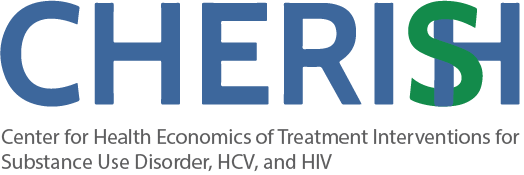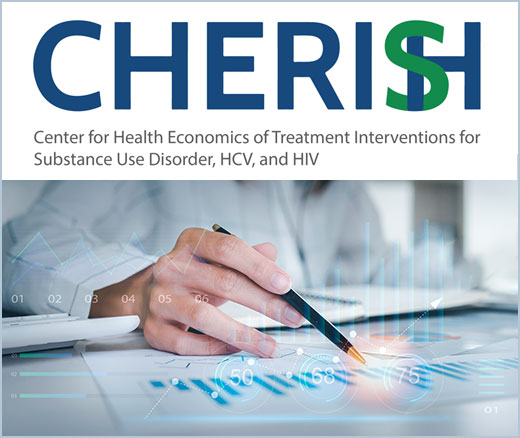
New Model Predicts Stimulant Overdose Risk Among Medicaid Patients
LDI Fellows Used Medicaid Data to Identify Individuals at Highest Risk for Cocaine- and Methamphetamine-Related Overdoses, Paving the Way for Targeted Prevention
Substance Use Disorder
Blog Post
Produced in conjunction with the Center for Health Economics of Treatment Interventions for Substance Use Disorder, HCV, and HIV.
While the pandemic continues to capture headlines, we can’t forget about another pressing public health crisis. Drug overdoses, the majority involving opioids, were up 30% in 2020, and we continued to see record levels in 2021. Addressing the overdose crisis requires multiple strategies, but treatment with medications for opioid use disorder (MOUDs) is a cornerstone of the response. MOUDs like methadone and buprenorphine substantially reduce overdose as well as opioid-related morbidity and mortality from other causes such as infections. But there are many barriers – including logistical and regulatory challenges, knowledge or beliefs about MOUDs, and stigma – that leave many patients without access to lifesaving treatments.
Two new studies from our team offer evidence about how to increase effective OUD treatment, focusing on emergency departments (EDs). Patients come to EDs following an overdose, for complications of substance use, or simply looking for help, and EDs are poised to offer low-threshold treatment by starting medications during the ED visit. This is supported by strong evidence showing that initiation of buprenorphine in the ED more than doubles treatment engagement at 30 days after the ED visit.
The first study, published in Annals of Emergency Medicine, describes the implementation of a multi-component strategy to increase ED-initiated buprenorphine at Penn Medicine. We previously identified barriers to treatment initiation in the ED. To overcome these barriers, we used behavioral design strategies to help clinicians better identify treatment opportunities, reduce friction related to prescribing and referral, and support patient engagement and care linkage.
First, we worked to increase clinicians’ ability to provide treatment by developing guidelines and order sets, and by increasing the proportion of clinicians authorized to prescribe buprenorphine. Clinicians need to obtain a DATA 2000 waiver, often known as an “X-waiver”, to prescribe buprenorphine. At the time of the study, this meant completing an eight-hour training for physicians or a 24-hour training for advanced practice providers. Although these regulations have since loosened and training is no longer mandatory, the process still requires advance registration for the waiver. To increase the prescribing capabilities of Penn Medicine ED clinicians, the health system implemented a one-time financial incentive for completing the training, resulting in an increase in X-waivered providers from six percent to 90% in the six-week incentive period.
The next step was to identify appropriate patients and offer treatment. With help from Penn’s Center for Health Care Innovation, we developed a system to automatically identify patients using information already collected in the electronic health record, such as medical history or reason for their ED visit. The presence of key information triggers an alert to a team of peer recovery specialists, who are individuals in recovery who assist with engagement, support, and navigation to the next steps in care. The use of an “opt-out” process allowed us to ensure that connections happened despite competing priorities in an ED visit.
Finally, we worked to increase motivation for treatment and social norms among clinicians to prescribe buprenorphine. During the implementation period, we regularly shared patient success stories and publicly congratulated clinicians for initiating the treatment.
We found a sixfold increase in buprenorphine use in patients with OUD, going from three percent of ED encounters to 23%. And when we analyzed outcomes using an interrupted time series analysis, the likelihood of a patient receiving buprenorphine during or after an ED visit increased by 25 percentage points in association with the interventions after controlling for patient and visit characteristics. The high rates of buprenorphine use were sustained through the end of the study period. Although the optimal treatment rate isn’t known, these results are higher than most prior literature.
Despite the overall improvement, we still saw substantial variability among clinicians, with treatment rates ranging from 0% to more than 60% of OUD-related encounters depending on the treating clinician. These results mirror findings in other settings, which show that even among X-waivered providers, there is wide variability in buprenorphine prescribing in practice.
This wide variation among clinicians was also the motivator for our next steps, which included efforts to nudge clinicians towards more evidence-based care by making treatment more of a default process. The second study, published in NEJM Catalyst, details the participatory design approach we took to make this happen.

We solicited insights from ED physicians and nurses and used an iterative approach to reimagine ED processes of care. One key insight was that patient identification and treatment needed to happen early in the ED visit. By the time physicians saw patients, it was often too late, and patients were experiencing severe withdrawal or had simply left. Both physicians and nurses supported a nurse-driven process with OUD screening in ED triage coupled with automated prompts to both nurses, physicians, and/or advanced practice providers to perform assessment and treatment of OUD and to deliver evidence-based treatment interventions.
The rate of positive screens in the first 10 weeks of the rollout was more than 1.5%, representing a 50% relative increase in the rate of patients identified through more traditional administrative data measures like ICD-10 codes. We are still analyzing the impact on clinical treatment outcomes, however, early feedback has been positive and we have now rolled out screening in a third ED within Penn Medicine. Data are currently being collected to measure the impact on downstream care outcomes.
Together, these studies provide early evidence about potentially scalable strategies to increase ED-initiated OUD treatment with implications for policy and practice. Although much of prior work on ED buprenorphine implementation has focused on education, guidelines, or consultative models, these initiatives alone may be insufficient to change practice. By targeting multiple obstacles within the care process and focusing on behavioral design principles like making new practices easy, attractive, social, and timely, health systems may see more substantial and sustained practice change. Our initiatives required investment in staff and other resources, but they are scalable and work with relatively few staff and existing infrastructure within the electronic health record.
Another key implication relates to the X-waiver as a regulatory barrier. Although recent legislation has eliminated training requirements to obtain an X-waiver, providers still need to go through a registration process, and many have called for eliminating this regulation. Although we support efforts to “X the X-waiver,” a sole focus on this barrier is likely to miss other challenges to effective treatment implementation.
As we work to meet the growing need for OUD care, we need to continue to expand how and where we deploy treatment and harm reduction interventions. ED-initiated treatment is just one example of how we can employ a “medication first” strategy, prioritizing MOUD access for patients whenever and wherever they touch the health care system. Ongoing work will focus on how to better engage patients in addiction treatment after they leave the hospital.
The work in the Annals of Emergency Medicine study was funded, in part, by grants from the Centers for Disease Control and Prevention (CDC 19R49CE003083), the Substance Abuse and Mental Health Services Administration (H79TI081596-01), the National Institute of Child Health and Human Development (K23HD090272001), the Penn Medicine Center for Health Care Innovation Accelerator Program, and the Abramson Family Foundation.

The study, Redesign of Opioid Use Disorder Screening and Treatment in the ED, was published January 1, 2022, in NEJM Catalyst Innovations in Care Delivery by Margaret Lowenstein, Rachel McFadden, Dina Abdel-Rahman, Jeanmarie Perrone, Zachary F. Meisel, Nicole O’Donnell, Christian Wood, Gabrielle Solomon, Rinad Beidas, M. Kit Delgado.
The study, Sustained Implementation of a Multicomponent Strategy to Increase Emergency Department-Initiated Interventions for Opioid Use Disorder, was published December 15, 2021, in the Annals of Emergency Medicine by Margaret Lowenstein, Jeanmarie Perrone, Ruiying A. Xiong, Christopher K. Snider, Nicole O’Donnell, Davis Hermann, Roy Rosin, Julie Dees, Rachel McFadden, Utsha Khatri, Zachary F. Meisel, Nandita Mitra, M. Kit Delgado.


LDI Fellows Used Medicaid Data to Identify Individuals at Highest Risk for Cocaine- and Methamphetamine-Related Overdoses, Paving the Way for Targeted Prevention

Penn and Four Other Partners Focus on the Health Economics of Substance Use Disorder

Penn Medicine’s New Summer Intern Program Immersed Teens in Street Outreach Techniques

LDI Experts Offer 10 Solutions to Get More Help to Seniors With Addiction

More Flexible Methadone Take-Home Policy Improved Patient Autonomy
Research Brief: LDI Fellow Recommends Ways to Increase Availability

Testimony: Delivered to Philadelphia City Council

Pediatricians’ Suggestions for Health Care Providers, Institutions, and Policymakers